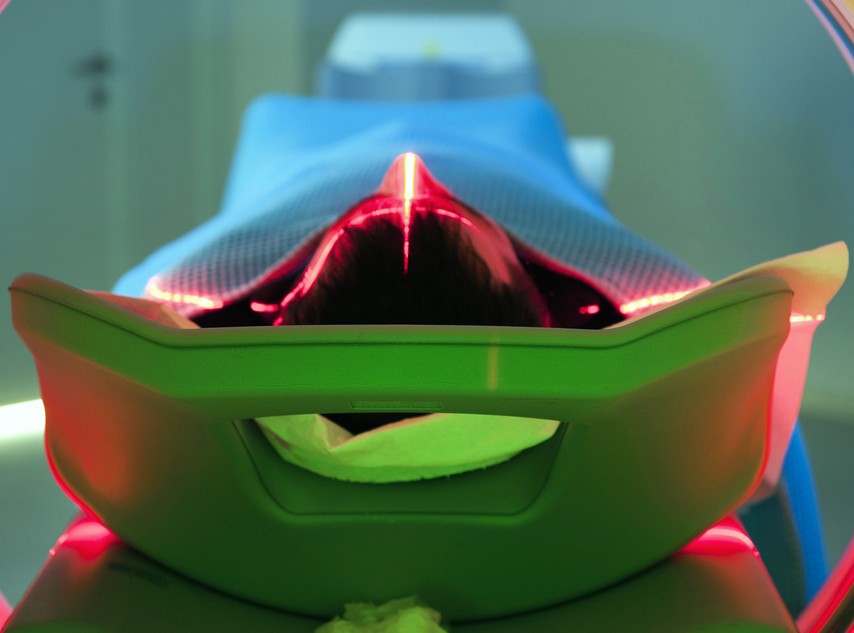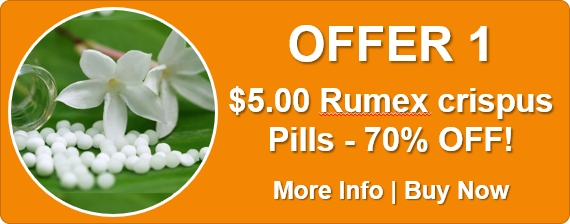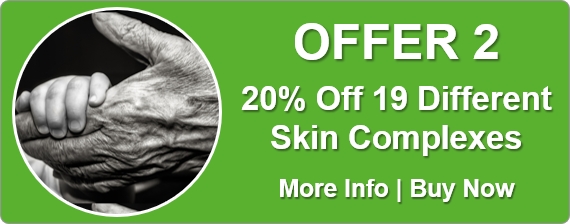Research and Paywalls: Homeopathy Plus regularly reports on homeopathic research, past and present, but we can’t link to complete research papers if they are behind a journal paywall - we can only provide a summary and abstract. If you wish to access a full paper from behind a paywall, please click on the link provided for the publisher’s purchase options.
Cancer Treatments and Homeopathy
Cancer – it’s a word we dread. Nobody wants to receive a cancer diagnosis but a significant number of us, or our loved ones, will be affected by cancer at some time in our lives.
The common conventional approaches of surgery, chemotherapy and radiation can be lengthy and difficult. When managing the side-effects of these treatments, people sometimes turn to homoeopathy. This article looks at the ways in which homeopathy can help and what the research shows.
What Is Radiotherapy and Chemotherapy?
 Radiotherapy (radiation therapy) and chemotherapy are conventional approaches to cancer treatment. They’re used to shrink or destroy tumours, prevent the spread of cancer or lessen its likelihood of return, and may be used in conjunction with surgery.
Radiotherapy (radiation therapy) and chemotherapy are conventional approaches to cancer treatment. They’re used to shrink or destroy tumours, prevent the spread of cancer or lessen its likelihood of return, and may be used in conjunction with surgery.
Radiotherapy kills cancer cells by targeting beams from a radiation machine at the cancer, or by inserting small amounts of radioactive material in or near the tumour.
Chemotherapy destroys cancer cells with chemicals that may be rubbed onto the skin, injected into the body, or swallowed as a medicine.
Both approaches damage the chromosomes of cells, restricting their abilitiy to grow or reproduce. Because most cancers grow and divide rapidly, it is hoped that they will be affected much more quickly by the treatments than normal cells that generally grow and divide at a much slower rate.
What Are Their Side Effects?
In spite of all efforts to prevent or minimise the risk, chemotherapy and radiotherapy do produce adverse reactions.
Common short term effects include nausea and vomiting, fatigue, loss of appetite, and skin burning or pigmentation.
Long-term risks include:
- Cancer – the very thing the treatments are trying to eradicate,
- Fibrosis – stiffening or hardening of exposed tissues,
- Scarring of exposed skin,
- Permanent dryness of eyes, mouth, vaginal mucosa and sweat glands,
- Heart disease – especially if radiation has involved chest,
- Cognitive decline – especially if radiation has involved the brain.
Because all rapidly dividing cells in the body are by affected treatment, not just the cancerous cells, some areas are particularly prone to unwanted damage.
These include:
- Bowel cells, causing diarrhoea,
- Blood cells, increasing the risk of infection,
- Hair follicles, leading to hair loss,
- Cells that line the mouth, causing inflammation and ulceration (stomatitis).
Homeopathic Help for Cancer Treatment Side-Effects
Homeopathy is frequently called upon for help by those seeking an alternative therapy to relieve the side-effects of radiation or chemotherapy. The following is a list of supporting research and studies about how it helps.
Skin Inflammation and Itching
- Symptoms of radiodermatits (a skin reaction caused by radiation) were relieved by homeopathic Belladonna and X-ray. Both remedies were more effective than placebo and the recommended conventional medicine.[1]
- Apis mellifica, a homeopathic remedy prepared from the sting of a bee, protected guinea pigs from radiation induced erythema (skin redness). [2]
- Calendula officinalis ointment reduced the incidence of pain and dermatitis in women receiving radiation for breast cancer. It was more effective than placebo and the recommended conventional medicine.[3] (Note: The ointment contained Calendula in herbal form but its effect was homoeopathic due to symptom similarity. Potentisation is not a requirement for homeopathy, just a way of introducing other benefits).
- Nine different homeopathic remedies prescribed for 25 patients according to their individual symptoms reduced post radiation induced itching. (Note: As per normal homeopathic prescribing procedures, if the first remedy wasn’t helpful the patient’s symptoms were reassessed and a new and better matching remedy prescribed. Altogether, 14 of 25 patients (56%) responded to the first remedy while 7 out of 9 patients responded to the second. In total 21 of 25 (84%) patients were successfully treated. The remedies included: Fluoricum acidum; [9/13]; Rhus-toxicodendron [3/5]; Causticum [2/3]; Ignatia [2/2]; Psorinum [2/2], Gamma-ray [2/2]; and Kali-bichromicum [1/1].)[4]
Chromosomal Damage
- White mice given homoeopathic Ginseng and Ruta graveolens before and after radiation suffered less chromosomal damage than mice given only placebo.[5]
- Indian research suggests that homeopathic remedies produce protective effects in the cells of experimental mice by regulating the genetic material within those cells.[6]
Nausea and Vomiting
There are no specific remedies for chemotherapy induced nausea and vomiting – just the standard ones traditionally used by homeopaths for all types of nausea and vomiting. Successful treatment requires the remedy to match the individual symptoms of the sufferer.
Stomatitis (Mouth Inflammation and Ulceration)
Traumeel, another complex of remedies, significantly reduced the severity and duration of chemotherapy-induced stomatitis (mouth inflammation and ulceration) in those undergoing bone marrow transplantation. Many of these patients were children. Remedies within the complex include: Aconitum napellus, Arnica montana, Belladonna, Bellis perennis, Calendula officinalis, Chamomilla, Echinacea, Echinacea purpurea, Hamamelis virginiana, Hepar sulphuris calcareum, Hypericum perforatum, Mercurius solubilis, Millefolium, and Symphytum officinale.[7]
Tautopathic Approach
Tautopathy is a branch of homeopathy in which the patient’s symptoms are treated with potentised doses of the specific chemical or medicine that caused those symptoms. The tautopathic approach is demonstrated in the following three studies:
- Potentised doses of carcinogens had a protective effect against liver cancer in rats exposed to those same carcinogens.[8]
- Potentised doses of conventional immunotherapy drugs, such as tumor necrosis factor, were shown to reduce their own crude dose side effects.[9]
- Homeopathic x-ray was used to relieve radiodermatits in those receiving radiation as part of their breast cancer treatment.[10]
Getting the Best from Homeopathy
The effects of homoeopathic remedies are far-reaching when prescribed according to the unique symptoms of the person rather than by the name of the condition or disease.
Most of the above research focused on the treatment of single symptoms or used complexes (combination remedies) in a ‘shot gun’ approach but homoeopathy is at its best when the individual’s cluster of symptoms is treated by a matching remedy rather than different remedies prescribed to treat those symptoms one by one.
For example, Cadmium sulphuricum is one of the better known remedies for chemotherapy and radiation side-effects because its ‘symptom picture’ covers extreme exhaustion, icy coldness, nausea and vomiting, anorexia, loss of hair, and weight loss – all common side-effects of patients receiving chemo or radiotherapy. All these symptoms can be treated by the one remedy rather than resorting to different remedies for different symptoms.
Homoeopathy also has more than just one remedy for treating a particular problem. For example, the nausea and vomiting associated with chemotherapy can be helped by remedies such as Arsenic album, Ipecacuanha, Nux vomica, Phosphorus, Tabacum, and many other others depending on whether or not the patient’s nausea is with or without thirst, accompanies a clean or dirty tongue, is worsened by warmth or cold, or is with emotions of irritability, cheerfulness, or quietness, and so on. The remedy that best matches the individualising symptoms of that person’s nausea is the one that will be the most helpful.
While homoeopathy can be safely used for simple ‘at home’ needs, self treatment for radiotherapy and chemotherapy side-effects will not give the best results. A qualified homoeopath with experience in this area should be consulted as he or she will differentiate between the sufferer’s symptoms, choose the most appropriate remedy, and prescribe a dosing regime that suits that person. The information in the Finding a Good Homeopath tutorial will help identify the characteristics of a well trained homeopath.
Important: A Word of Caution about Prevention
A recent Cochrane review found there were no serious side effects or interactions when homeopathy was used as a treatment for the adverse effects of radiotherapy and chemotherapy.[11] While this is to be expected (absence of side-effects and interactions being a hallmark of homeopathic treatment) a word of caution should be made about using homeopathy to prevent, rather than treat these side-effects.
Not only can homeopathy treat many problems, it can also prevent them – as some of the research listed above indicates. For this reason, careful consideration should be given to using homoeopathic remedies for chemotherapy and radiotherapy side-effects AHEAD of treatment as they may also block the cell-destroying effects of these approaches. Until more research is available in this area, it would be wise to use homeopathy only as side-effects occur AFTER treatment. It may be one of the few times when homeopathic prevention is not better than cure.
Getting On With It
As said at the beginning, nobody wants to receive a cancer diagnosis – but if it happens, the best way to face it is with accurate information and the caring support of family, friends, and trusted healthcare professionals. After considering all options and making the choice for treatment by radiotherapy or chemotherapy, remember that homoeopathy can help with any side-effects, should they arise.
Next in this Series: The remedies discussed in this article (an others not discussed) can reduce the side-effects of conventional cancer treatments but homeopathy is also being used to treat cancer. This topic will be discussed in the next article in this series.
References
[1] Balzarini, A.,Felisi, E,. Martini, A et al., Efficacy of Homeopathic Treatment of Skin reactions During Radiotherapy for Breast Cancer: A Randomised, Double-Blind Clinical Trial,” British Homeopathic Journal, (2000)Jan:89(1):8-12.
[2] Bildet, J., Guyot, M., Bonini, F., et al., Demonstrating the Effects of Apis mellifica and Apium virus Dilutions on Erythema Induced by U.V. Radiation on Guinea Pigs, Berlin Journal of Research in Homeopathy,1990,1:28.
[3] Pommier, P, et al., Phase II Randomized Trial of Calendula officinalis Compared with Trolamine for the Prevention of Acute Dermatitis During Irradiation for Breast Cancer, Journal of Clinical Oncology, 2004, 22:1147-1453.
[4] Schlappack O., Homeopathic treatment of radiation-induced itching in breast cancer patients. A prospective observational study. Homeopathy. 2004 Oct;93(4):210-5.
[5] Khuda-Bukhsh, A.R., Banik, S.,Assessment of Cytogenetic Damage in X-irradiated Mice and its Alteration by Oral Administration of Potentized Homeopathic Drug, Ginseng D200, Berlin Journal of Research in Homeopathy, 1991, 1,4/5:254. Also Khuda-Bukhsh, A.R. Maity, S., Alteration of Cytogenetic Effects by Oral Administration of Potentized Homeopathic Drug, Ruta graveolens in Mice Exposed to Sub-lethal X-radiation, Berlin Journal of Research in Homeopathy, 1991, 1, 4/5:264.
[6] Anisur Rahman Khuda-Bukhsh. Mice as a model for homeopathy research. Homeopathy, Volume 98, Issue 4, October 2009, Pages 267-27.
[7] Oberbaum, Yaniv, Ben-Gal, 2001. Homeopathic Medication TRAUMEEL S Reduces Chemotherapy-Induced Stomatitis in Children. Cancer, 2001:Vol 92, No 3, pp 684-690.
[8] De Gerlach, J., and Lans, M.,Modulation of Experimental Rat Liver Carcinogenesis by Ultra Low Doses of the Carcinogens, in M. Doutremepuich, Ultra Low Doses, Washington, D.C./London: Taylor and Francis, 1991.
[9] Safrit, S, and Bonavida, B., Sensitivity of Resistant Human Tumor Cell Lines to TNF and Adriamycin Used in Combination, Cancer Research, 1992, 52: 6630-37.
[10] Balzarini A, Felisi E, Martini A, De Conno F.Efficacy of homeopathic treatment of skin reactions during radiotherapy for breast cancer: a randomised, double-blind clinical trial. British Homeopathic Journal. 2000 Jan;89(1):8-12.
[11] Kassab S, Cummings M, Berkovitz S, van Haselen R, Fisher P. Homeopathic medicines for adverse effects of cancer treatments. Cochrane Database of Systematic Reviews 2009, Issue 2. Art. No.: CD004845. DOI: 10.1002/14651858.CD004845.pub2.
[12] Grimmer A. Homoeopathic War Remedies: Homoeopathic Recorder LXVI: March 1951 p.263
[13] Grimmer A. Differentiating Symptoms of the Cadmium Salts: Homoeopathic Recorder: Sept 193o p.675





